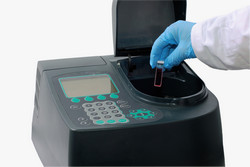A powerful tool to study molecular motions
Among the experimental methods used to probe the molecular structure and dynamics of multicomponent materials, dielectric spectroscopy has evolved into a valuable tool. Dielectric spectroscopy presently covers frequencies starting from microhertz to terahertz, enabling the study of a multitude of phenomena in aqueous solutions, polymer composites and ferroelectric crystals. Until the EU-funded project SIDIS (Simulation of dielectric spectra), standard molecular dynamics simulations were employed to investigate dielectric permittivity spectra. Advanced methods that can address important processes responsible for spectra peaks but limited in timescale had not yet made their way through broadband dielectric spectroscopy. Within the SIDIS project, researchers sought to fill this gap by complementing classical molecular dynamics simulations with enhanced sampling techniques to explore rare events in an efficient way. Specifically, in their studies of glass-forming glycerol and salt and ionic liquid/water mixtures, they combined metadynamics and parallel tempering. The team first analysed the dielectric spectra of nine popular models for water to provide guidance in choosing the most appropriate one. Qualitatively, all models can reproduce the main features of the spectrum. However, some models proved to be better suited to approximate the dielectric permittivity and other parameters like relaxation frequency. Taking these findings to the next step, SIDIS researchers developed a new approach to molecular dynamics simulations to determine the lowering of dielectric permittivity when salt is added. They showed that this change is caused by ion pairing. The microscopic connection between ion pairs and the appearance of specific features in the dielectric spectra of saline solutions was also clarified. In addition, using non-equilibrium molecular dynamics simulations, the researchers were able to compute the decrement over salt concentrations that were not accessible with conventional approaches. The research carried out during SIDIS is expected to facilitate the use of dielectric spectroscopy by more chemists, physicists and materials scientists.
Keywords
Dielectric permittivity, molecular dynamics simulations, dielectric spectroscopy, ion pairing

